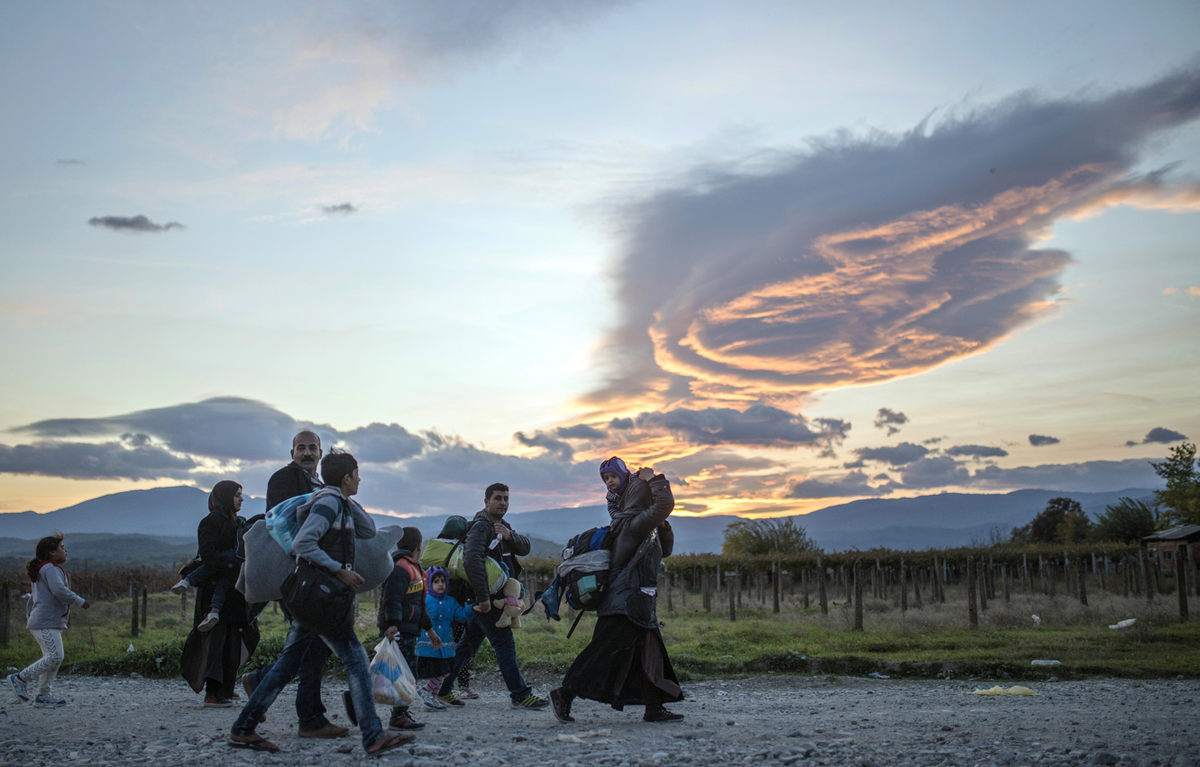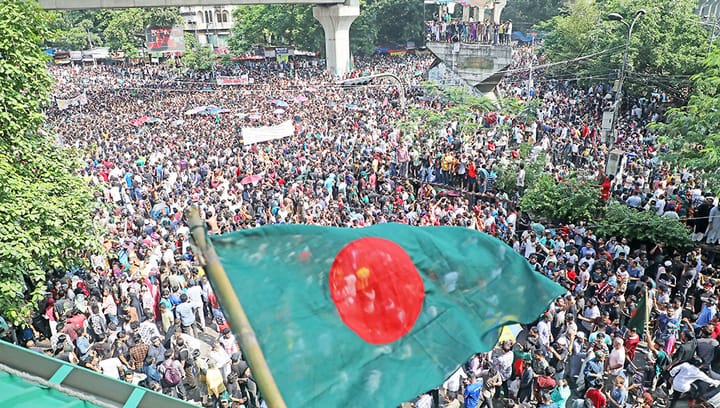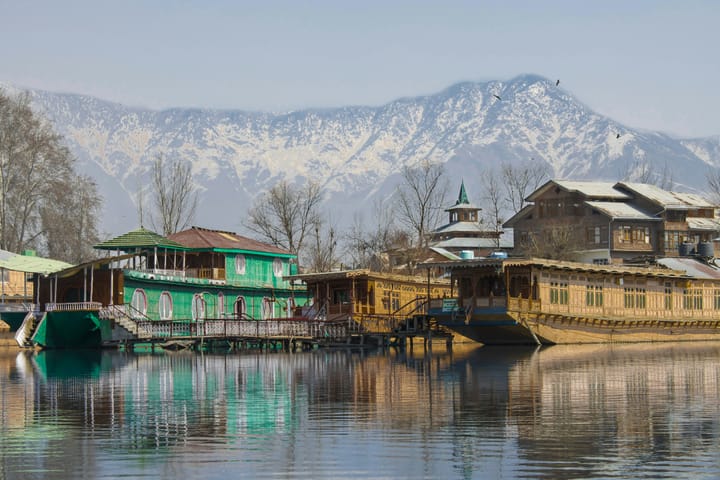I.
From the beginning of what was mistakenly called a refugee crisis, one event remains crucial to understanding the performative dispersion of power that governs borders. On August 22, 2015, due to the failure of other measures to control border porosity, a state of crisis was declared in North Macedonia’s border regions–my home country and a crucial link along what is known as the Balkan Route. The implicit gesture behind such a declaration lies in the withdrawal or postponement of the application of law, and with it, the legal security that is withdrawn from a crisis zone. With this decision, the border areas—now designated as crisis zones—have, from 2015 to the present, been rendered materially extraneous to the law, thereby making them into a field of exclusion, abandonment, and uncaring (Leshem 2025).
The law’s relationship with its exteriority concerns an extended space for its power. In the context of migrant spacialities, this directs us to the necessity of instability—or more precisely, crisis—within the legal system itself. With the state of crisis, border management ceased being a matter of law and order. Instead, this state thrives on the fundamental tension between the decision (the sovereign act of exception) and the norm (the established legal framework). This tension is not a sign of the system’s failure; rather, the ambiguity inherent in this tension is consciously operationalized as a juridical-political technique of governance. The performative element of the norm, when it is interrupted by the exception, becomes more dynamic and departs from the letter of the law to enter the realm of the act. This points directly to a core premise of Carl Schmitt’s political theology: that the decision, free from any normative bond, is not an act of pure chaos but is itself a form-creating force. As Schmitt argues, an order still exists…even if it is not a juridical order. The crisis does not just affirm one sovereign; it produces a dispersion of sovereign figures, both immediate and authorized, legal and criminal. In the prolonged, normalized crisis of border management, the power to decide on the exception is no longer centralized. It is fractured and delegated—both formally to authorized state agents (like border guards) and informally to criminal actors (like smugglers) who all operate within this ‘new’ order. This creates an anomie that does not suspend the force of law but rather replaces it with a system of unregulated, decentralized power.
We are dealing with a particular juridical realm that enables law to remain in force while simultaneously recognising transgression or irregular border crossings as a fact. The decision to maintain these border areas as crisis zones has been consistently renewed for almost a decade. Such border zones, which have for ten years been equated with areas of crisis, raise the question of mobility in a state of crisis: how do law and sovereign order instruct border management? What is at stake is not merely a legal paradox, but a condition in which formalised practices are contaminated by direct power—that is, by the force of law—even when this does not correspond to the juridical system of rules, but only to the emergency authority that executes and possesses the capacity to impose its domination. The initial gesture of imposed domination unfolds precisely through the prolongation of the state of crisis, since, by exercising its full power, the executive authority decides to enforce a special and adapted application of ordinary rules.
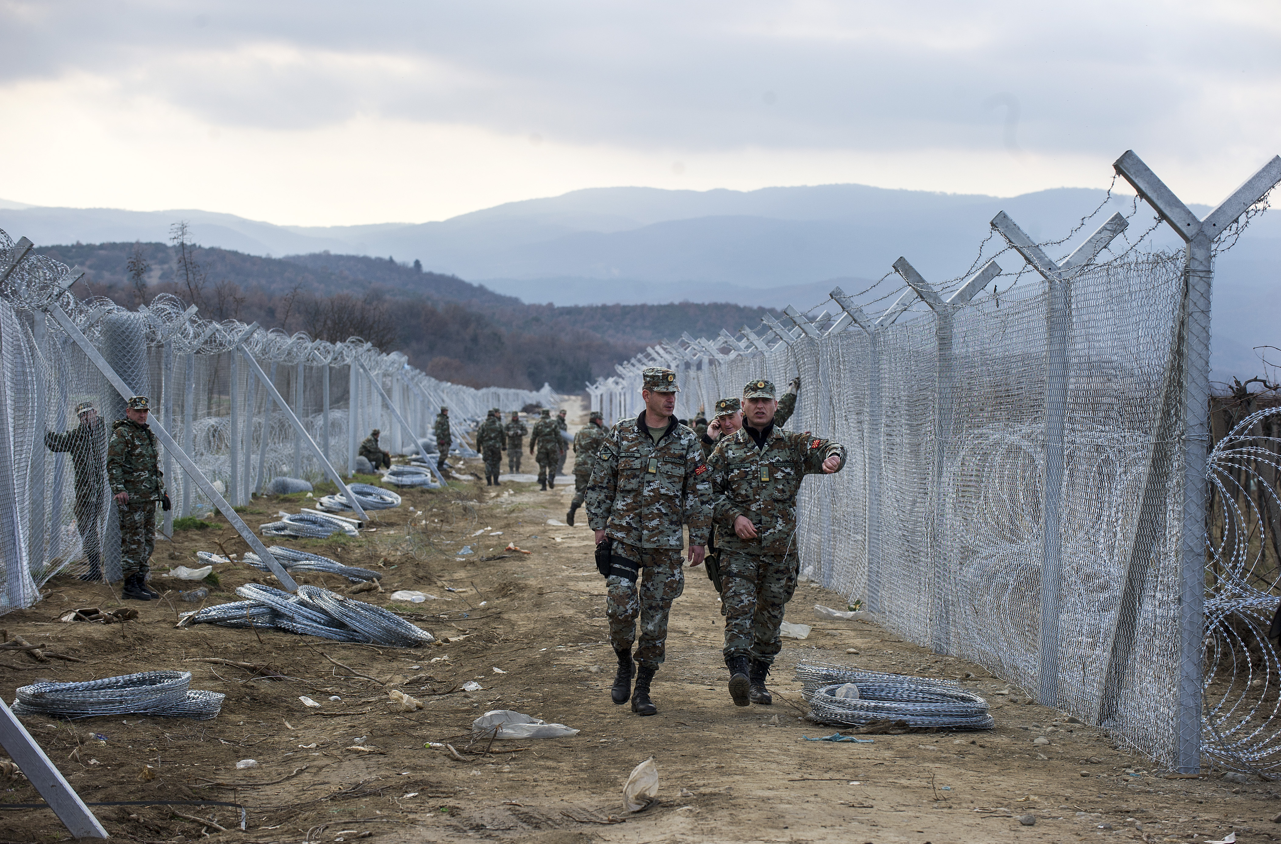
The ordinary rules, which are meant to apply universally for the common good, are now reoriented toward supporting the executive’s decision—namely, to secure the borders for the sake of national security. This extension of decision into norm almost invariably signals an expansion of law—both temporally and spatially. In this case, the temporal expansion of the state of exception exceeds the framework of formal law, rendering it paradoxical and obscuring the meaning of legality itself. This is because the very legal provisions that authorise the proclamation of a state of crisis simultaneously prohibit its prolongation for legally undefined intervals of time, and yet the Macedonia situation has persisted for a full decade (If the state of crisis continues for more than 30 days, the Government must seek approval from Parliament to extend the duration, or propose the declaration of a state of war or emergency, Law on Crisis Management, “Official Gazette of the Republic of Macedonia,” nos. 29/05, 36/11, 41/14, 104/15, 39/16, and 83/18, Article 31).
The legal paradox of the crisis is not confined to the text of the law or to the material field of its application. Rather, the paradox expands, engendering so-called ‘adaptations’ of the law to governmental interests in defending national security. These adaptations penetrate the material reality of the borderscapes, which can only be grasped if one accepts paradox and its tensions as an epistemological measure. The paradoxical reality of the Macedonian borderscapes thus consists of this repurposing and adaptations: 1) The transit centres of Vinojug and Tabanovce continue to operate as registration sites without possessing legal status; 2) What international law identifies as the principle of non-refoulement or as pushbacks, when enacted on the southern border near the so-called ‘Gate to Greece,’ is instead designated as organized return; 3) The right to asylum becomes a right to rest, or merely a right to transit; 4) Private family houses may be requisitioned for use as Lagers, for detaining abducted foreigners. Consequently, this juridical realm has a direct material, visceral effect on the lives of hundreds of thousands of people. What is at stake is the dispersion of power, since from the highest government body down to the lowest-ranking police officers and even smugglers, is precisely the decision—not the norm—that defines the field of (non)intervention.
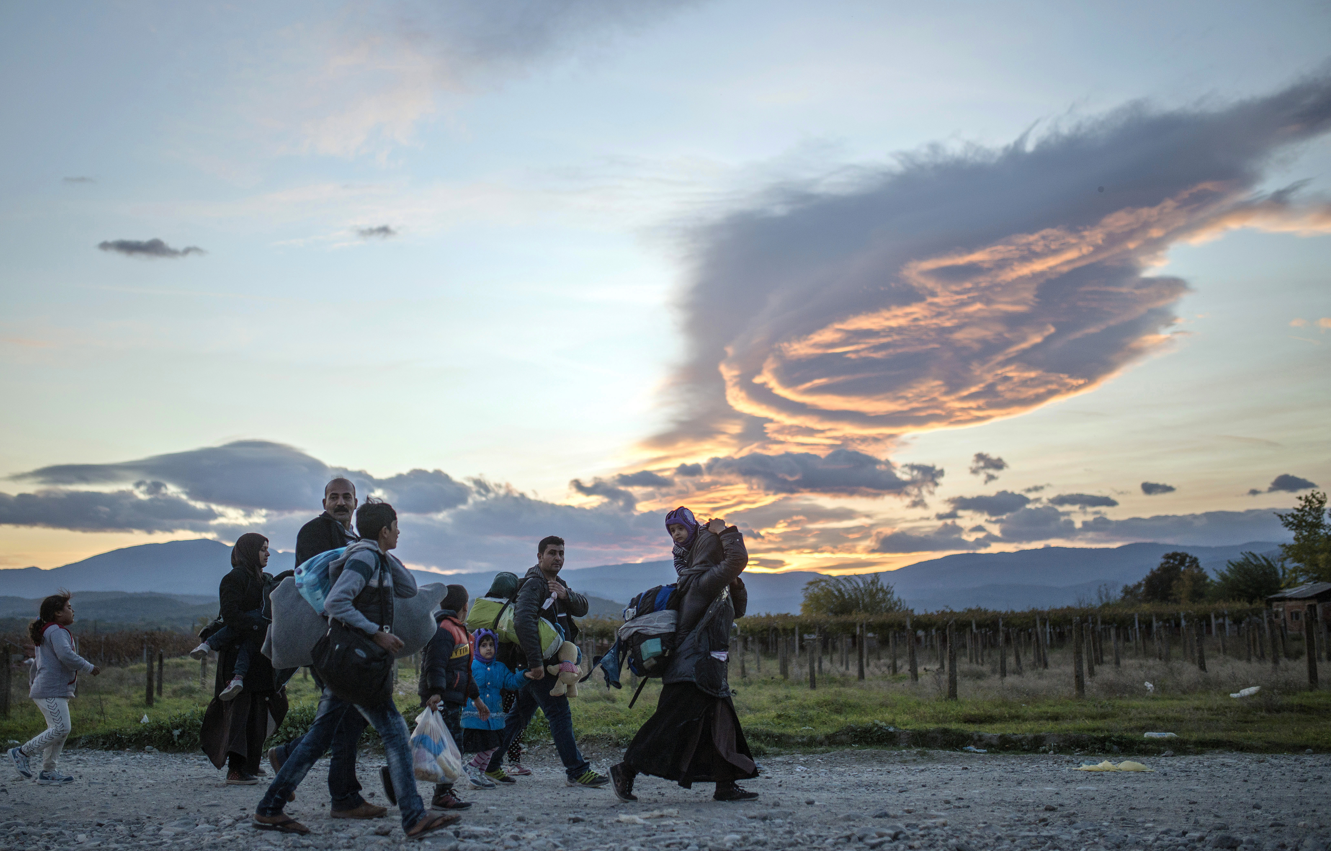
This brings us to the embodied experience of movement itself. As Andreas Philippopoulos-Mihalopoulos notes, “There is a movement to the law, an embodied displacement of ‘the person who comes to the law’ in order to find justice that must be taken into consideration by law. The movement is specific, spatially inscribed, bodily demanding, and expresses a ‘here’ that deserves to be heard at least as loudly as ‘now’”(Philippopoulos-Mihalopoulos 2014: 185). Persons on the move directly embody this movement toward the law, which is also a movement toward justice. However, the sovereign dictum suppresses the ability to inhabit or transit this space, just as justice can be suppressed by law. This is because movement necessarily transforms into a nomospheric (Delaney 2011) process, since mobility does not evoke solemnly a border regime or its founding; but points to how it feels like for a person on the move to navigate it when moving through a dense atmosphere of law (checkpoints, regulations, biometric scanners, legal statuses), not just crossing a single line. David Delaney’s neologism is a deliberate move, designed to attune us to the specific ways law is experienced in space. He coins nomospheric by blending nomos (law) with sphere (as in atmosphere) to conceptualize law not as a static set of rules, but as a pervasive, ambient, and socially-produced environment. This distinction is crucial because it differentiates his project from Carl Schmitt’s more familiar, foundational use of nomos. For Schmitt, nomos is primarily the concrete, geopolitical act of sovereign land-appropriation and division that founds a political order. Delaney’s nomospheric lens, by contrast, focuses on the affects of law in everyday life. Adopting this lens makes a fuller investigation possible because it shifts our focus from law as a distant sovereign decree to the lived, embodied experience of moving through a world saturated with legal implications. For the persons on the move this article examines, the law is not just a single border line on a map (Schmitt’s nomos), but a dense atmosphere of checkpoints, bureaucratic hurdles, and differential legal statuses that they must constantly navigate. This nomosphere is precisely what is formed as Delaney writes in The Spatial, the Legal and the Pragmatics of World-Making, “as the contours [of] power relations are cast in terms of legal discourse, encoded in nomic traces and figures, and inscribed into settings and nomoscapes” (Delaney 2011: 120).
The question then becomes: when the juridical order functions through this complex architecture of exception and abandonment, creating such nomoscapes, renewing the state of crisis for over a decade now, what other frameworks for understanding and remembrance are left?
At this point, we arrive at the culmination of one dominant axis: that of sovereign power, which wields Law, Order, and official History as instruments for administering territory and life. This is the axis of control, and its function creates the unequal distribution of power we have just examined. To find a response, we must therefore pivot not so much to an entirely different conceptual axis, but rather locate the cracks, ruptures and liquidity in it. The gesture against the rigidity of the juridical axis, its historical stabilisation, provides a point of opposition for the refugees and migrants being delivered into the abyss between the law and justice. This gesture might be activated through the memory of resistant knowledges, where transformation is the core of lived experience, and ultimately, solidarity emerges as the only possible horizon for a shared future. Why look to the future? Because, as Iain Chambers puts it: “While history apparently takes care of the past, registering and affirming its truth, the turbulent archive, posing questions of ownership and authority, promotes a more extensive critical space composed in practices and powers that are always contested and under construction. Here, the past, not yet fully defined, recognised, or interpreted, must still arrive from the future. This distinction frees the archive from the disciplined domain of the historiographical apparatus” (Chambers 2017: 2).
II.
The homogenous approach of History towards the memory of something that has already been temporally and spatially equated with a fixed state of crisis involves an integral violence in order to insist on the stability of the territory and its contribution to the unification of the nation and the state. The exclusive logic of national belonging is a fatal illusion, especially in a region through which corridors and transit zones are formed, or even more importantly, a region that still mourns its earlier false borders, where, around thirty years ago, a different state of peoples and society existed (Yugoslavia). The stability of territory is linked to borders as a reservoir of sovereignty. But borders are porous, and the experiential memory of their location, in contrast to any homogeneous history, points to something else.
If we move away from a superficial archaeology of borders as objects, and instead locate through their testimony how the power of the state apparatus has been distributed against mobile bodies—bodies upon which the signs of searching for a good life is legible, and whose only strength is the act of being nothing more than human—we then approach “an ongoing genealogy composed in relations, ruptures and discontinuities, where the past works up new critical configurations of the present” (Chambers 2017:7). Before I propose the genealogical framework of memory as a possible platform for archiving and examining global modernity, it remains important not to abandon the critical analysis of border structures and their landscapes. Such zones, which encompass steel walls, barbed wire, along with documents and bureaucracy, “produce a wound, a scar that will never heal and is destined to remain open as an interrogation” (Ibid).

The formation of a refugee corridor through several countries whose national pride is still fragile—but whose inclination towards the nation-state model has accustomed them to base belonging solely on nationality and in conflict with otherness—in fact points to broken territories and interrupted narratives, or interrupted patrimonies. It is precisely along the lines of borders that new landscapes of passage are formed. For those who remain within the borders, the question remains: how to traverse a space and temporality that, in order to be controlled, the concept of crisis is introduced as the main political technology of governing, leading to the exhaustion of resources and the tightening of social ties into a form of domination? The peoples of the Balkans find themselves in such a state today, just as they did in 2015.
Against the artificial sentiments of fear and anger towards otherness, which were easily transposed onto the non-ethnic, global other—the figure of the stranger seen in the millions of refugees and migrants passing along the Balkan Route—the answer for those who remain comes precisely through the mobile geographies and the life-force of those who move and those who cross (borders). This force is identified with “the dis-assembling of a belonging guaranteed in a fixed, stable and rooted identity” (Ibid). Such an exchange, which eludes a disciplined epistemology and focuses rather more on transformatory experiences, bears witness to our desires, whereby a blank page awaits our words, instead of trawling quotations and practices from the Western canon, to propose other, emerging patrimonies that are distinct from the existing national codifications. It is about how this exchange activates the intersections between space and time in which suppressed archives of mobility can be placed in the plurality of experiences involved in inhabiting and being in the world. Once crossed, objects that testify to the (bio-)political technology of governance—borders—create different landscapes and become a place of potential, that is, a “space in which all subjects emerge modified from encounters that are irreducible to a unique point of view” (Chambers 1996: 51).
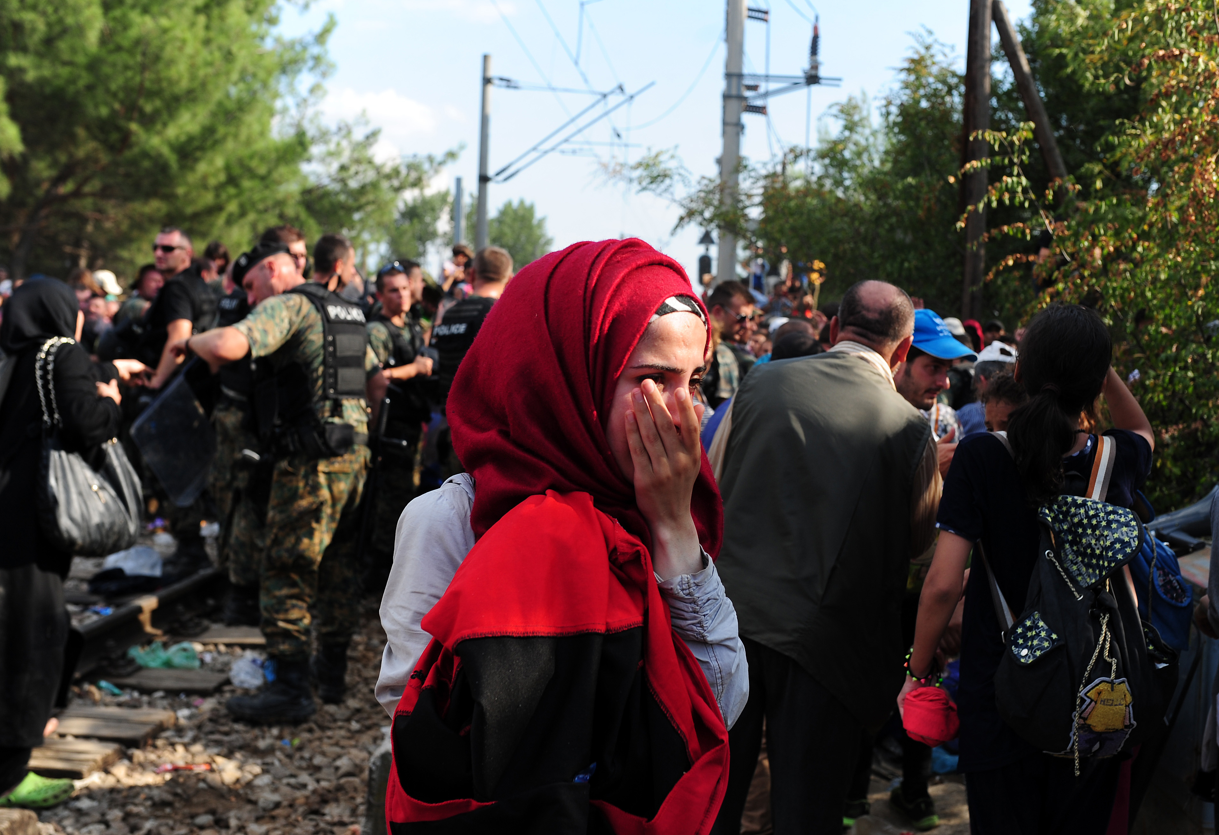
Mnemonic solidarity, as I understand it, refers precisely to those recognisable and unobserved potentials that we do not recall through the formal files of history, full of documents that deny status or reject existence, which suppress the singular archives of life as a force. We remember these potentials through two main things: 1) an archive that does not consist of strictly conceived and stable-flowing narratives, but is rather a site of unintentional and brief encounters, affects, experiences, passages, trauma, and the joy of the journey; 2) an examination of the present in which we are cast, that is located within borders. Mnemonic memory in that sense does not seek names for strict identities; it does not seek to apply the labels of those who stay and those who move, reducing them to disposable populations. Instead, it transforms belonging into a recognition of asymmetrical ways of being and inhabiting the apparently universal shaping of the world.
In the context of narrating the Balkan Route through the revival of genealogical archives—instead of through a history of border management whose porosity, in fact, duplicates the history of order with the histories of the people transiting the corridor—mnemonic solidarity points us towards being shaped by ‘heterogeneous pressures plunging us into the potential of the present.’ “These altogether less obvious and more complicated modes of identification hint at a sense of ‘flexible [or global, cosmological] citizenship’. Identities are articulated across the hyphen, the transition, the bridge or passage between, rather than firmly located in any one culture, place or position” (Chambers 1996: 53).
This doubling of the history of order with the archives and genealogy of moving bodies—bodies that, in fact, shape and recreate space, even in the most rigid of locations like the border—emerges both as a method for practising the present, and also for remembering. I will conclude with my own personal position in relation to this doubling, for which I claim no exclusive authorship. Every time I return to the same borderlands, which in 2015-16 I visited as a border monitor, then in 2018 when I organised study visits for students, and in the last two years as a post-doc research fellow at the University of Bologna, working on the ERC Advanced Grant ‘TheGame: Counter-mapping Informal Refugee Mobilities along the Balkan Route’, I understand that my ‘fieldwork’ is transformed (doubled) into ‘homework’. “Complementing this passage and turning the ethnographic gaze inwards on ourselves, or at least myself, my own culture (…) is rendered particular in its limits, even ‘exotic’ in its obsessions [with crisis]. Simultaneously, for those we may designate our ‘others’, it is increasingly clear that it is not a question of their requiring protection from our ‘progress’ because they do not have the autonomy, the imagination, or political acumen to render themselves visible and articulate in the modern world. No, it is not that. It is rather a question of them only intermittently having the power and resources to permit their histories and voices to disturb and deviate what we mistakenly consider to be our personal property” (Chambers 1996: 56).
*This text was presented at the #ESCAPES 2025 Memorie e luoghi dell’esilio conference in Milan, September 2025. The photographs are by Robert Atanasovski, and were taken in the period between 2015-2016 in various locations around the southern border of North Macedonia, close to the Vinojug Transit Center. They are published for the first time as part of this article.
Funding: This work was only partially funded by the European Union-European Research Council Advanced Grant 2021 (ERC-2021-ADG, project n. 101054428 “The Game: Counter-mapping Informal Refugee Mobilities along the Balkan Route”). Views and opinions expressed are, however, those of the author(s) only and do not necessarily reflect those of the European Union or the European Research Council Executive Agency. Neither the European Union nor the granting authority can be held responsible for them.
REFERENCES
Chambers, I. (1996). Signs of silence. In I. Chambers & L. Curti (Eds.), The post-colonial question: Common skies, divided horizons (pp. 285–302). Routledge.
Chambers, I. (2017). Matter out of place: Migrating modernity and unauthorised archives. Transtext(e)s: Transcultures 跨文本跨文化, 12. https://doi.org/10.4000/transtexts.726
Delaney, D. (2011). The spatial, the legal and the pragmatics of world-making: Nomospheric investigations. Routledge, London.
Leshem, N. (2025). Edges of Care: Living and Dying in No Man’s Land. University of Chicago Press.
Philippopoulos-Mihalopoulos, A. (2014). Spatial Justice: Body, Lawscape, Atmosphere (1st ed.). Routledge, London.
Viki Mladenova is a post-doctoral research fellow at the Department of History and Cultures, University of Bologna, working on counter-mapping informal refugee mobilities along the Balkan Route within an ERC Advanced Grant TheGame. She holds a PhD in International Studies from L’Orientale University in Naples, Italy. Beside carrying out ethnographic research along the Balkan Route, and in particular in so-called ‘Southern Balkan invisible spatialities’, she has a strong research attachment to biopolitics and critical legal studies. Previously she worked as a project research assistant at the Refugee Law and Migration Center - Iustinianus Primus Law Faculty, Skopje, and the Macedonian Helsinki Committee for Human Rights.
